Do you ever feel like there’s never enough garden space for all the plants you want to grow in your yard? It’s one of the challenges of urban living as lot sizes continue to shrink.
However limited your garden space may be, it doesn’t need to hinder your ability to cultivate your own food. The key lies in optimizing the available area, emphasizing vertical utilization. By adopting this strategy, you can grow potatoes vertically as a workable alternative. And wire fence is an important tool for achieving this goal.
A potato tower is one of the easiest and fastest ways to build a space-saving garden for spuds. All you need is some fencing mesh, enough straw to line your planter, and some good-quality soil to grow potatoes vertically and beautifully. That’s it!
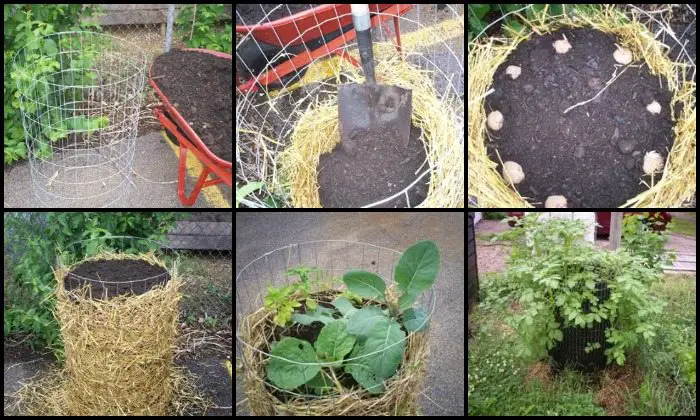
Also, it’s incredibly easy to grow potatoes vertically. No need to dig up the ground or prepare raised beds. It’s even a fun and creative way to spruce up your garden and impress your friends with your gardening skills.
You can even use this idea in your vege garden to act as a living fence post. One in each corner with mesh between the planters and you’ve just blocked off some of those critters that also like your produce! So, it’s worth giving a shot – trying to grow potatoes vertically using wire fencing!
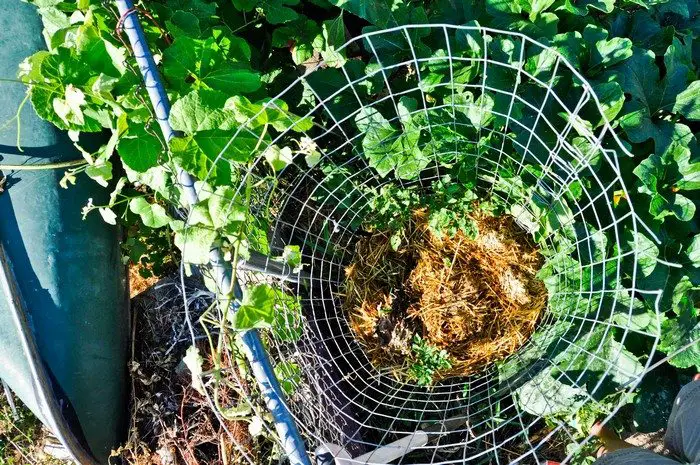
Is this what you need in your yard to grow potatoes vertically?
Not only it saves space in your garden when you grow potatoes vertically using wire fencing but it also provides numerous benefits.
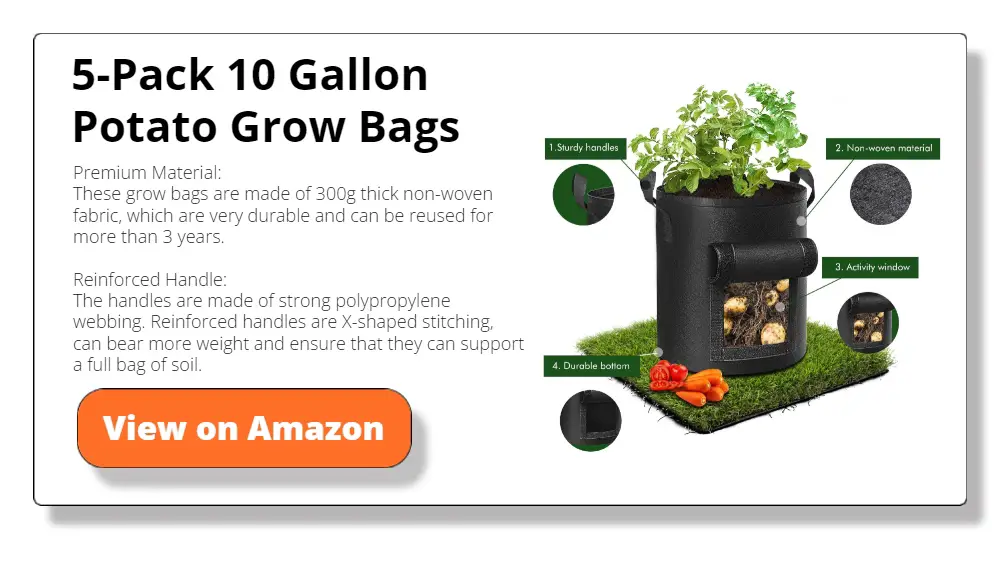
When you grow potatoes vertically, you can maximize your garden’s potential and increase your potato yield. Plus, the wire fencing provides a strong support system for the plants as they grow, ensuring they stay upright and healthy.

No more worrying about your plants getting knocked over in a storm or weighed down by heavy potatoes. Instead, your plants will stand tall and strong, producing delicious tubers that you can enjoy all season long. It will be a lot of fun to grow potatoes vertically!
Contents
How to Grow Potatoes Vertically Using Wire Fencing
Get ready to redefine your gardening experience with a touch of innovation! If you thought growing potatoes was confined to the ground, think again.
In this guide, embark on a journey that breaks the soil-bound norms and takes your spud-growing game to new heights. Say goodbye to space constraints and hello to a bountiful harvest as you grow potatoes vertically through the ingenious use of wire fencing.
Dig into the future of potato cultivation! Now, gather the necessary materials and tools you’ll need to grow potatoes vertically.
Materials
- 3-4′ tall Wire Fencing Mesh
- Tie / Pliable Wire
- Straw / Hay
- Pure Compost
- Water Source
- Potatoes
Tools
- Wire Cutter
- Shovel
Click on any image to start the lightbox display. Use your Esc key to close the lightbox.![]()
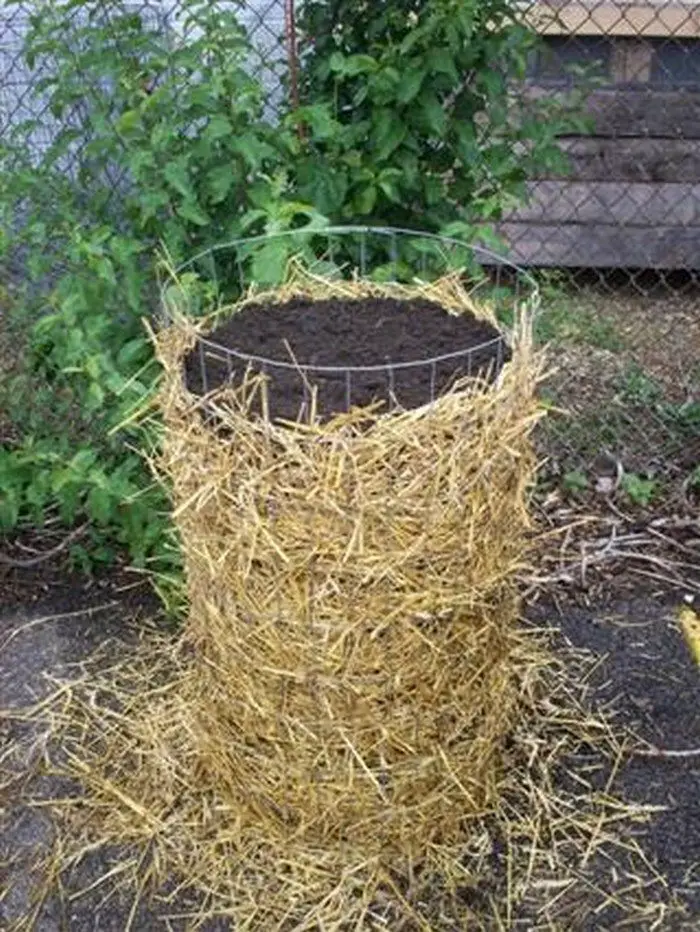


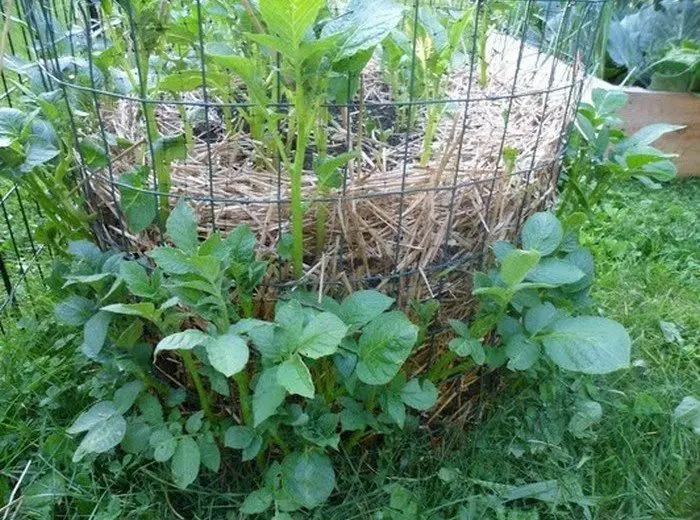
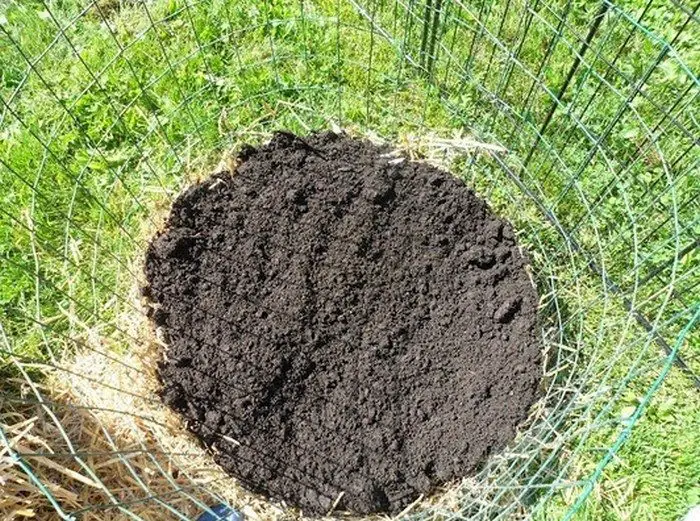
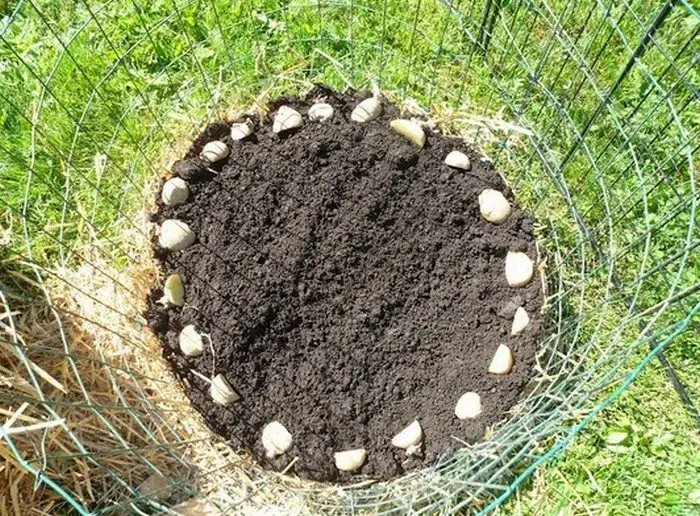
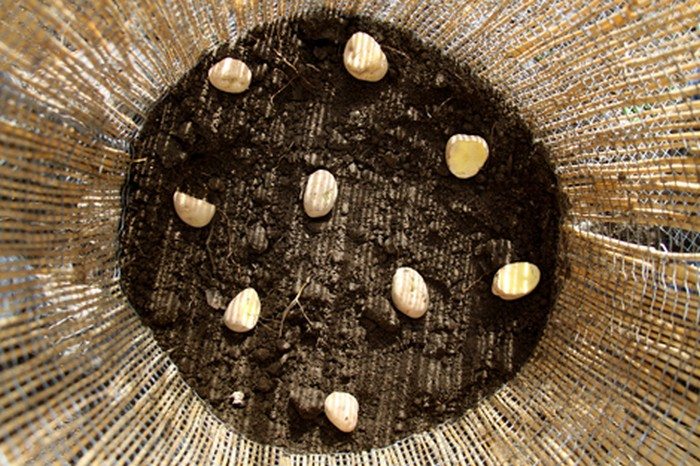
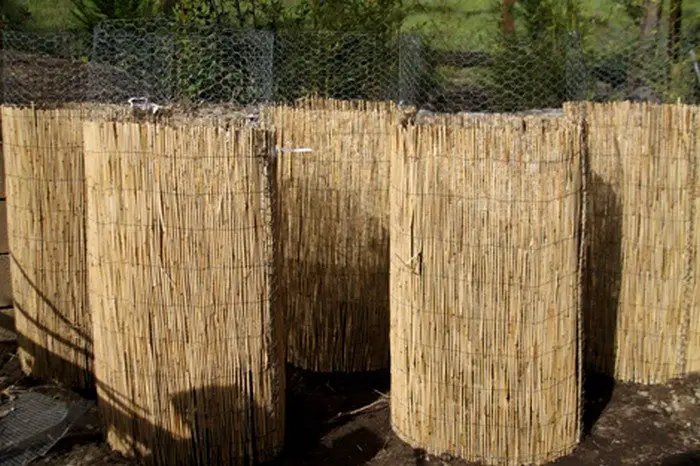

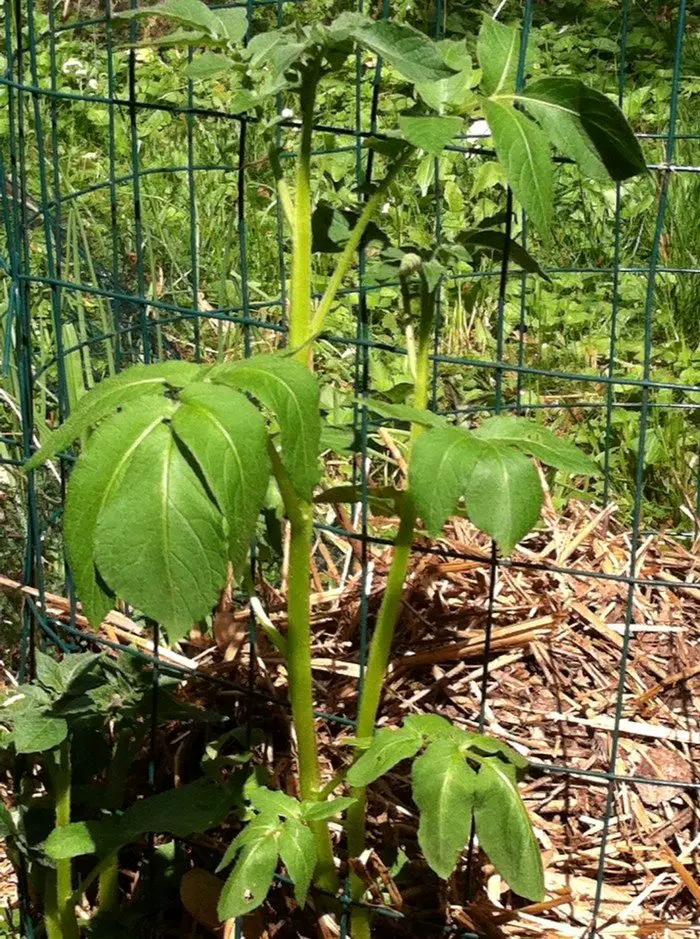
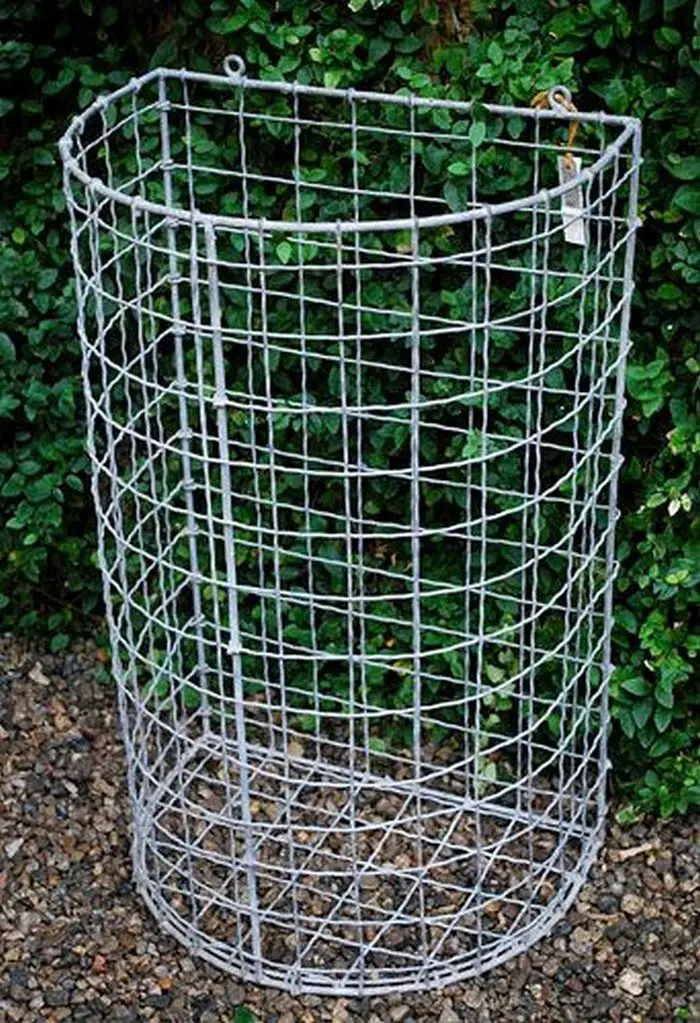

Steps
In the world of gardening, each step holds the promise of abundance, and today, you’re about to tread the path to potato-growing success like never before. Imagine harnessing the synergy between nature and innovation, as wire fencing becomes the canvas for your culinary dreams. Here’s how to use such a sturdy and reliable material to grow potatoes vertically.
Step 1: Craft a cylinder utilizing the age-old principles of geometry. According to these tenets, the formula dictates that the circumference is equal to the diameter multiplied by approximately 3.14. Applying this to a 10-foot fence, dividing by 3 yields a cylinder with a diameter of 3 feet.
Step 2: For added rigidity to the cylinder, thread a 2 ft rebar through the base of the fence. While a lengthier rebar or a fence post is optimal.
Step 3: Moving forward, the subsequent phase involves encasing the exterior with straw (to prevent soil from escaping through the openings) and then proceeding to load the interior with a mixture of soil and sand.
Upon reaching a height of approximately one foot above the ground, place four potatoes along the circumference, maintaining a distance of roughly 6 inches from the edge before concealing them with soil.
Then, layer straw on the outer side and alternate with sand and soil on the inner side, building upward until a substantial layer, ranging from one foot to 18 inches, establishes above the initial level.
Step 4: Iterate the preceding procedure in successive tiers. As you reach a height of approximately 3 feet from the ground, introduce a final batch of potatoes onto the upper surface, enveloping them with a layer of soil measuring around 4 inches in thickness.
To further enhance the growth process, incorporate Azalea fertilizer intermittently throughout the construction stages. For slightly acidic soil, opt for an acid-loving plant fertilizer to cater to their specific needs.
Step 5: With the possibility of progressive growth of the upper layer potatoes, maintain a consistent practice of supplementing soil, employing straw as a protective buffer along the sides to prevent soil displacement.
This process continues until reaching the uppermost section. It’s worth noting that when you bury potatoes in this manner, they have the potential to generate new roots and spuds within the surrounding soil.
Perhaps you’re wondering, “How do you plan to cover the potato leaves that are extending outward?” Well, the truth is, you aren’t. Burying the upper portion, and maintaining hopeful anticipation that the potatoes situated in the innermost region will also yield a fruitful outcome.
You now know how to grow potatoes vertically using wire fencing in only five easy steps! Special thanks to Plangarden for providing insightful information on the process of planting potatoes vertically…
Grow your own root vegetables at home with these Root Vegetable Grow Bags!
Here’s another vertical potato gardening idea you might also like — the spud box!
Benefits of Vertical Potato Gardening
Growing potatoes in a vertical garden is not only a space-saving solution but also offers a host of benefits that can enhance your gardening experience and increase your yield. Whether you’re dealing with a small backyard or a balcony, learning how to grow potatoes vertically can transform your approach to gardening. Here are the key advantages:
Improved Air Circulation
When you grow potatoes vertically, the plants enjoy better air circulation compared to traditional ground planting. This increased airflow helps to reduce the risk of fungal diseases, which potatoes are particularly susceptible to. Vertical setups allow for breezier conditions, keeping the foliage dry and healthy.
Easier Pest Management
Vertical gardening makes it easier to inspect and manage pests. With the elevated setup, it’s more straightforward to spot early signs of infestation and address them promptly. When you grow potatoes vertically, you can avoid many of the common ground pests that affect potato crops, such as wireworms and potato beetles.
Enhanced Soil Drainage
Growing potatoes vertically typically involves using containers or specialized planters, which can offer better drainage than ground soil. Proper drainage is crucial for preventing waterlogging, which can lead to root rot and other moisture-related diseases. This setup ensures that your potatoes grow in an optimal environment.
Increased Accessibility
Vertical gardens offer a great answer for people with limited mobility or who would rather not often stoop down. Growing potatoes vertically makes maintenance chores including watering, trimming, and harvesting more easily available and less physically taxing.
Maximizes Limited Space
For urban gardeners with somewhat limited outside areas, vertical gardening is perfect. Growing potatoes vertically lets you maximize vertical space and enable the production of a sizable crop not feasible with the same horizontal footprint. The amount of food you can generate per square foot of soil will be much raised by this approach.
Using these techniques to grow potatoes vertically not only maximizes the potential of your garden but also simplifies and increases your working efficiency in gardening. Vertical potato cultivation is a satisfying approach to eating fresh potatoes straight from your own space regardless of experience level in gardening.
Watering Techniques for Vertical Potato Towers
Growing potatoes vertically depends critically on watering, particularly in tower configurations. Healthy development and best output depend on proper hydration, however conventional watering techniques might not be as successful given the special construction of vertical towers.
These methods help to guarantee your success to grow potatoes vertically by getting just the correct water level without over-saturating.
Consistent Moisture Levels
Growing potatoes vertically calls for constant soil moisture. While too much water can cause rotting and disease, potatoes need a consistent supply to mature completely. Check the moisture content often with a soil moisture meter. Keeping the soil moist rather than waterlogged is the aim.
Drip Irrigation System
Installing a drip irrigation system can be an efficient way to water potatoes grown in vertical towers. This system delivers water directly to the roots at a controlled pace, which is ideal for maintaining the necessary moisture levels without waterlogging the soil. It’s also water-efficient, reducing waste and ensuring that water is delivered where it’s most needed.
Soaker Hoses
Alternatively, wrapping soaker hoses around or laying them along each layer of the potato tower can provide an even distribution of water. This method allows water to seep out slowly, reaching all parts of the soil. It’s particularly effective for larger vertical setups where manual watering might miss lower layers or not saturate the soil evenly.
Manual Watering Techniques
If you prefer manual watering, use a watering can with a long spout to reach all levels of the tower. When growing potatoes vertically, it’s important to water slowly and deeply, which encourages stronger root growth. Start from the top of the tower and let the water trickle down to lower layers, ensuring each layer gets adequate moisture.
Mulching
Applying a layer of organic mulch around the plants in your vertical potato tower can help retain soil moisture and reduce the frequency of watering. Mulch such as straw or shredded leaves will also add nutrients to the soil as they decompose and help maintain an even soil temperature.
By implementing these watering techniques, you can ensure that your vertical potato towers are optimally hydrated, supporting healthy growth and boosting your potato yield. Efficient watering practices are essential when growing potatoes vertically, as they help prevent common issues like uneven growth and water stress.
Get Your Vertical Potato Garden Growing!
So you’ve found the ultimate guide for growing a bountiful harvest in limited spaces. This reveals the techniques for transforming wire fence into an inventive instrument, covering everything from constructing the ideal cylinder to raising your potatoes to the skies.
Embrace the journey of vertical cultivation and relish the fulfillment that comes from enjoying locally sourced excellence. Prepare to set out on a trip that, with just 5 simple steps and the magic of wire fencing, will bring you delectable success!
For more gardening solutions, check out our garden cloche project!





